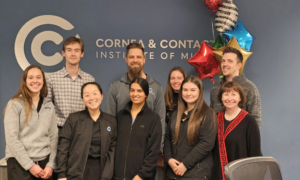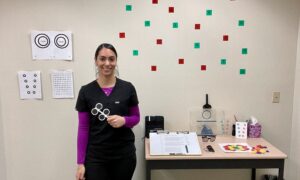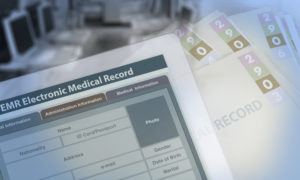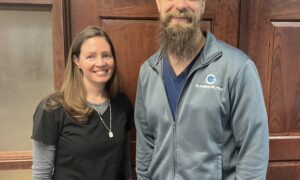By Eric Rettig, OD

April 28, 2021
Targeted improvements can change how you serve patients while significantly increasing revenues. Here are a few changes my practice implemented that made a huge difference to our patients’ care and experience in our office, while boosting our profitability.
After looking back at our profit and loss statements from the last five years, I averaged out the annual increase in our revenues to over $150,000 annually, after making the following three changes.
Changing to an Independent Lab
Challenge: We felt like we were just a number to our previous lab. It was often difficult to get solutions to problems, and we had a difficult time receiving credits for warrantied jobs. We had several calls and meetings with representatives from this company, and often it was suggested that we try a different lab, but we continued running into the same issues. These difficulties were taking up significant staff time and costing us money because our employees were always checking invoices and job orders to make sure we got the right lenses and were receiving credits when we should.
Solution: Finally, we decided to take matters into our own hands and try a completely different brand of lenses. We researched several and decided on an independent lab that manufactured lens designs we had never used before. We did early trials to evaluate the quality of the lenses and the turnaround time. After a few months, we decided to go full steam ahead with the new lab, and have not looked back since. It has been two years since we started using this lab and we are more than pleased. When we call, we are greeted by a human being. We do our own edging, and our lab technicians have been extremely happy with the quality of the products. Our patients have, too.
Results: We have seen a decrease in our AR warranty usage and a decrease in progressive non-adapts. Our practice was able to cut costs for ophthalmic lenses by over 40 percent, which in a four-doctor, high-volume practice is a massive savings. The only staff training required was getting used to using the new lenses and treatments, which was brief and relatively seamless. Our practice has never been one to use brand names for the lenses we prescribe, so we did not have to break the habits of using certain product names.
I would encourage other practice owners to look beyond big-name brands for ophthalmic lenses. There are many independent labs that would love your business and would be willing to work with you to get you the results and prices you want.
Optical Remodel
Challenge: Our optical to an outside observer was pretty nice, and compared to other large optical centers in our area in upstate Pennsylvania, it was very nice. However, it was 12+ years old and had grown stale in our eyes. We also wanted to set ourselves apart even more from all the other local opticals.
Solution: We decided on a complete optical overhaul, which you can read about and see photos of HERE. We enlisted the services of Travis Reed of Creative Visionary Inc., who provided creative ideas that got us thinking outside the box. The remodel cost $175,000-$200,000. Once completed, patients loved the new look of our optical and we often received compliments on the changes that had been made.
Results: Our optical sales increased by 24 percent after the remodel. We never closed during the remodeling process. For a few months, frame selections were trickier, but patients were understanding and happy to see that their eye doctors were doing something to make their experience better. Staff adapted well during this time and also enjoyed seeing their workplace improve.
Other Articles to Explore
There were several ideas that came up during our brainstorming session prior to and after our remodel that seemed crazy (mannequins?!), but we trusted the people helping us and it turned out great. I would encourage other doctors thinking of updating their optical to explore all ideas, even those that seem crazy. Even if you do not use all of them, you will identify improvements that can set you apart from other practices.
Delegating Parts of the Exam to Staff
Challenge: We wanted to increase efficiency and see more patients per day without sacrificing patient care. The biggest step to doing that was training our technicians properly to allow us as doctors to spend more time analyzing data and discussing our findings and treatments with patients. To some this may sound obvious, but I still see many doctors who do not allow their technicians to check visual acuities or measure pupils and EOMs. Some don’t let their techs dilate patients until after the doctor has evaluated them.
Solution: I trained my technicians to perform pupil testing, VAs, EOMs and to dilate patients before I interact with the patient. Should they see abnormalities during testing (irregular pupils, high IOP, abnormal eye movements), they let me know and I check this myself. Some doctors are probably reading this and thinking, “How could you dilate the patient before you’ve refracted them?” To that I answer, “I just do.” I rarely find issues with my spectacle prescription because the patient is dilated. I am also not a fan of sending a patient to the optical to pick out glasses while they are dilating. I find that it disrupts patient flow and staff workflow, and it is inconvenient for the patient to have to walk back and forth to various parts of the office.
My technicians are also trained to obtain special testing measurements and results based on the patient’s history before they see me. My staff has been trained to get OCT images, TearLab evaluations and fundus photos for all patients with a history of macular issues, dry eye, glaucoma, corneal irregularity and peripheral retinal issues, among other conditions. Again, this is to keep patient flow efficient and allow less disruption during the exam to obtain additional testing. If new diagnoses are found and additional testing is appropriate, it is completed.
Results: Taking these steps has allowed me more time to go over test results with patients and to see more patients per day. Our office averages $450 per patient, so seeing just one extra patient per day increases revenue by ~$10,000 per month. This change also improved our patients’ experience. They are not waiting as long for me before their exam and are not in as much of a hurry after their exam. They are now more likely to discuss eyewear options with our opticians and more likely to increase their overall spending when choosing frame and lens options.
I urge you to train your staff to gather more data during pretesting and to perform some of the tests you may do at the beginning of your exam. The freedom this gives you to spend time educating your patients is great, and you may find you are less likely to get behind during your day, which can keep patients happy.
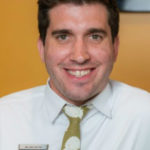 Eric Rettig, OD, is a partner with Mountain View Eye, a Vision Source practice in Altoona, Penn. To contact him: ericmrettig@gmail.com
Eric Rettig, OD, is a partner with Mountain View Eye, a Vision Source practice in Altoona, Penn. To contact him: ericmrettig@gmail.com

